

Some motor setups — as the NovaTorque Premium Plus+ EC motor that we use as an example in this piece — deliver high efficiencies to fan systems typically run off ac induction motors … and do so at a moderate price premium over that of NEMA Premium products.
In fact, if an engineer is looking at an application that would typically use an oversized 3,600-rpm motor and VFD to meet a fan speed below 3,600 rpm, this modest price premium is even mote modest.
Likewise, if an engineer is designing a system to replace a setup usually overspeeding an 1,800-rpm induction motor, the efficiency difference between NovaTorque and the ACIM product increases the further the system goes into the constant-horsepower range.
Note: All data presented in this paper is based on dynamometer testing of NEMA Premium Induction Motors vs. NovaTorque EC Motors. While this article discusses specific speeds and bhp, the underlying premise is that designs can get better efficiency within this operating area holds — even for other speed and horsepower choices.
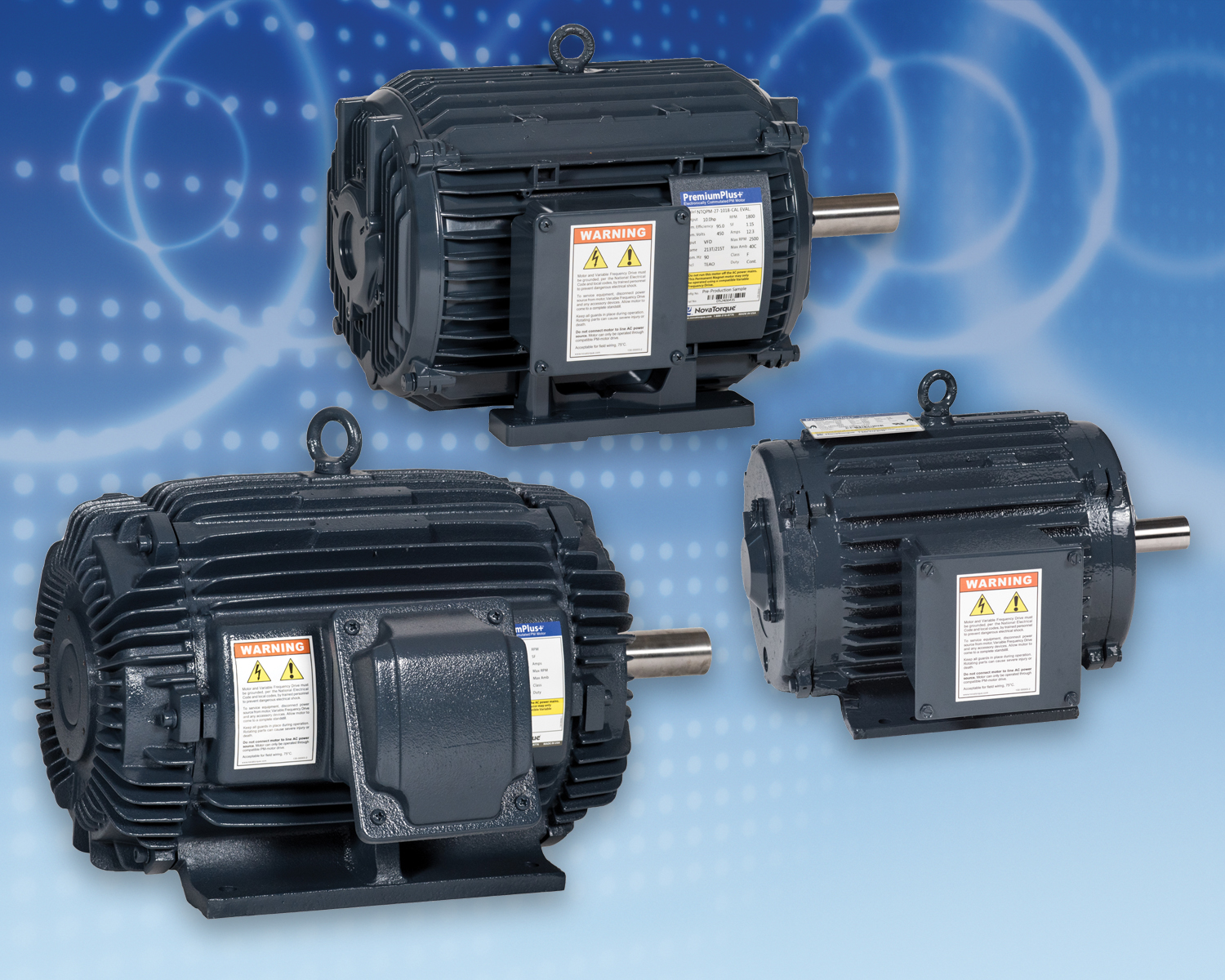
There are many direct-drive fan applications with fan speeds between 1,800 and 3,600 rpm. This is a challenging range for which to pick a motor. Options are to start with an 1,800-rpm motor and run it faster into its constant-horsepower range up to the target speed …
… or use a 3,600-rpm motor and run it slower in its constant-torque range down to the target speed.
If the design starts with an 1,800-rpm ac induction motor and runs in its constant-horsepower range above 1,800 rpm, there’s decreasing efficiency as controls increase speed past 1,800 rpm going to 2,700 rpm.
Then as the design goes past 2,700 rpm, besides decreasing efficiency it may also exhibit decreasing motor capability. More specifically, the torque capability of ACIM may drop off faster than the increase in speed — resulting in a horsepower decrease in this range. This horsepower decrease may require that the induction motor be oversized to meet the fan rating.
Designs can also approach this “no-fans land” using 3,600-rpm motors. But depending on the fan bhp and speed, the design will likely need an oversized 3,600-rpm induction motor (to let it meet the target bhp rating at a lower speed than its nameplate speed). Oversizing if needed usually requires a larger and costlier VFD. In addition, induction-motor efficiency decreases on variable-torque applications with decreasing speed.
With this approach, the engineer will pay a cost penalty for the induction motor and VFD combination — and get decreased efficiency too.
Today, there is a third option. This is to use an electrically commutated motor (ECM) with a 2,400-rpm base speed. EC motors are not tied to the induction-motor convention of the number of poles determining motor base speed. In fact, one of the great characteristics of permanent-magnet motors is their flat torque curve — both above and below base speed.
Below we review three typical examples within this 2,200-to-3,200-rpm fan speed area.
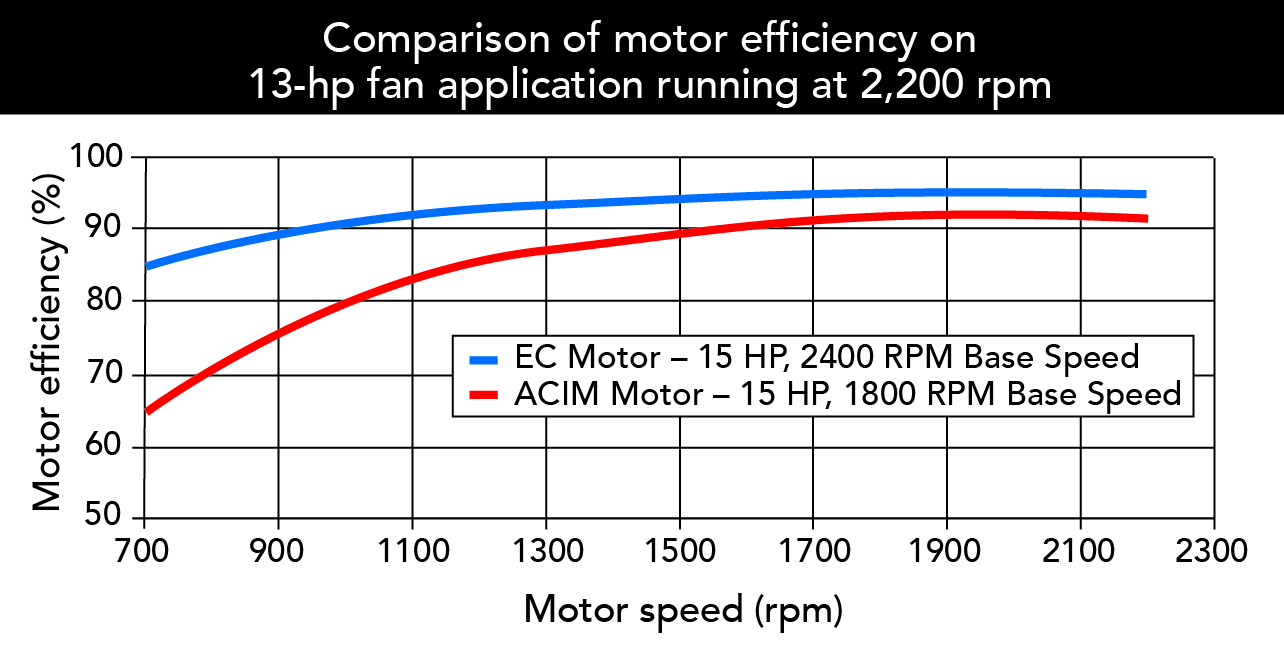
Note from the chart that the induction motor efficiency begins to decrease slightly as it goes above 1,900 rpm. Even when the EC motor is running below its base speed, its efficiencies throughout the operating range shown are well above the ACIM. If you continue to reduce speed the efficiency of the ACIM will decrease at a much faster rate than the EC motor.
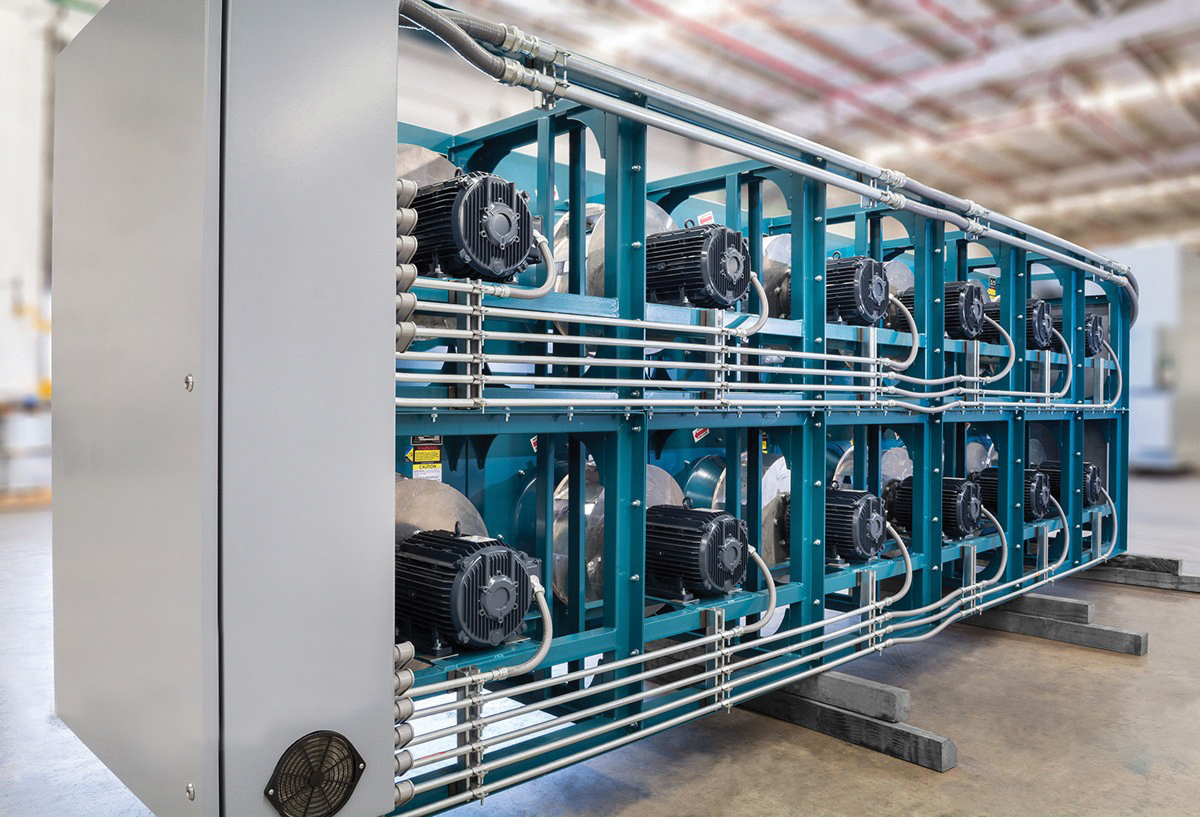
This rating allows a comparison of all three approaches … overspeeding the 1,800-rpm ACIM; overspeeding the 2,400-rpm EC motor; and oversizing and turning down the speed of the 3600-rpm ACIM.
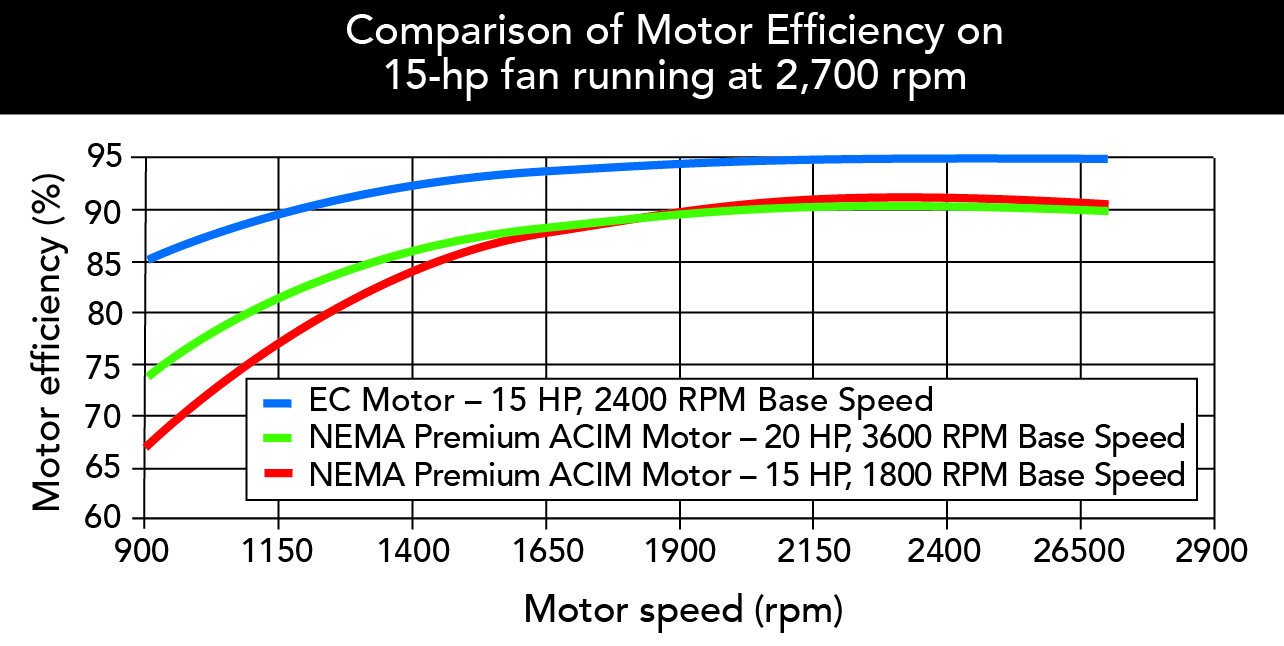
Note from the chart that the EC motor exceeds the efficiencies of both the 15 hp (1,800 rpm) fan motor and 20-hp 3,600 rpm ACIM fan motor throughout the speed range.
Both ACIMs have the same efficiency at the maximum operating point, but the 1,800-rpm ACIM increases in efficiency from 2,700 rpm down to 1,900 rpm.
At that point, it begins its decrease again. The 20-hp 3,600-rpm ACIM fan motor is slightly below the 15-hp 1,800-rpm ACIM fan motor in the top half of the fan speed range, and exceeds the efficiency of the 15-hp ACIM fan motor in the lower half of the speed range.
This choice while approximating the efficiency of the 15-HP ACIM needed a larger motor and VFD. If an engineering team is choosing between ACIMs, they must perform a careful evaluation of the fan’s operating range to make the best choice. The ECM exceeds the efficiencies of both ACIM choices throughout the speed range.
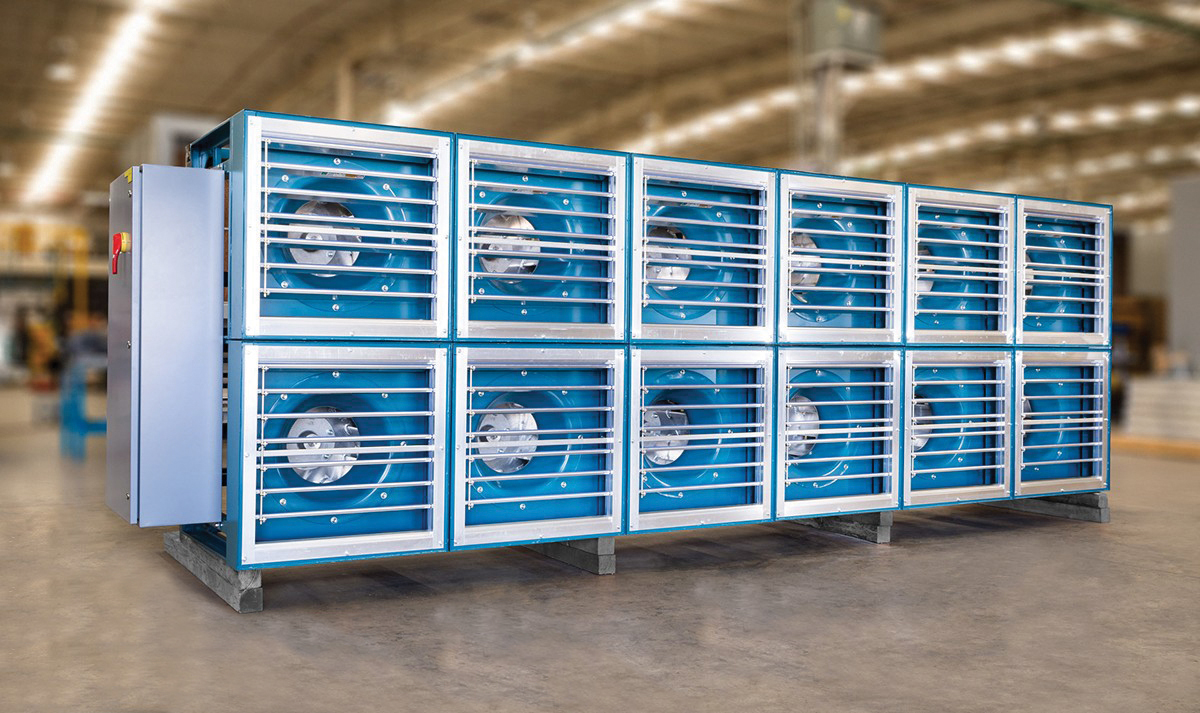
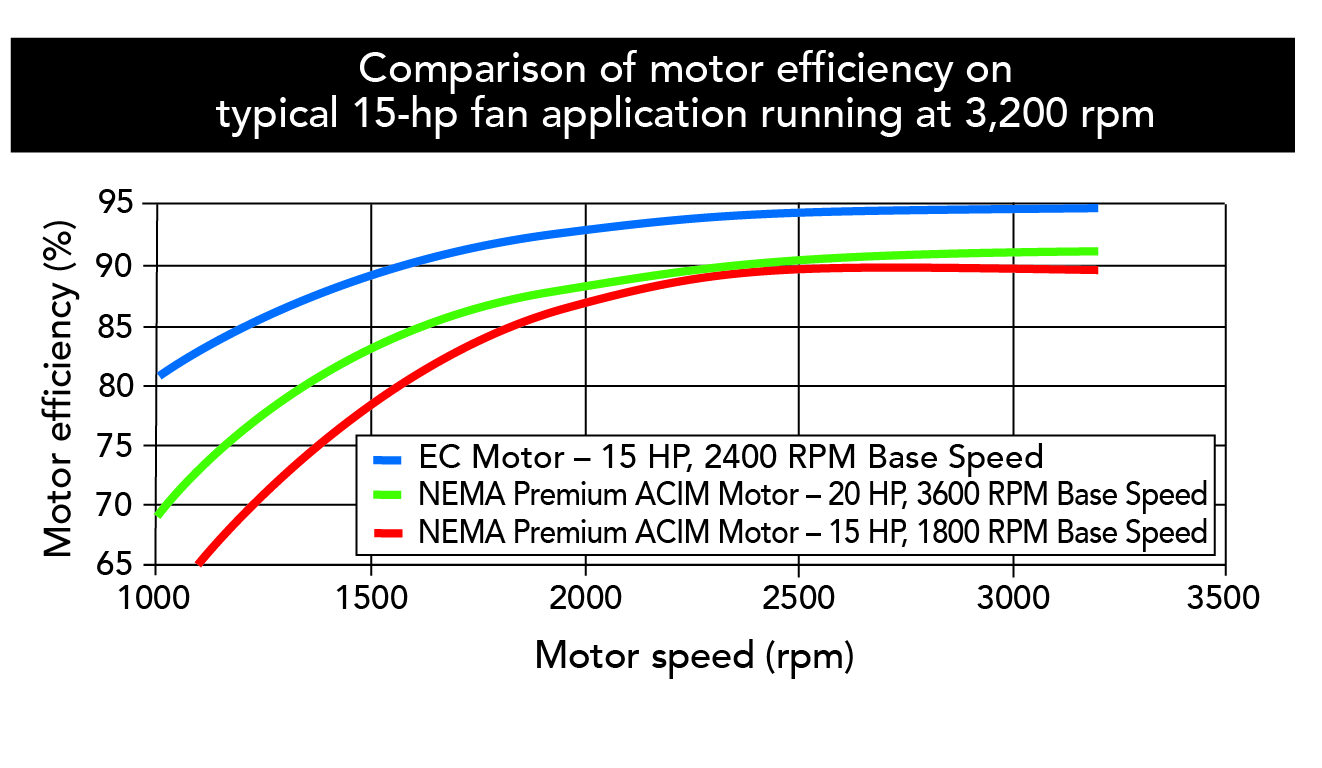
This speed is the maximum overspeed of the EC motor tested and much closer to the speed of the 3,600-rpm ACIM reducing the about of speed reduction required to reach the fan operating point.
Again, notice from the spreadsheet and the curve that the NovaTorque ECPM motor exceeds the efficiency of the ACIM motors …
… and delivers that level of output without oversizing of the ACIM or the VFD.
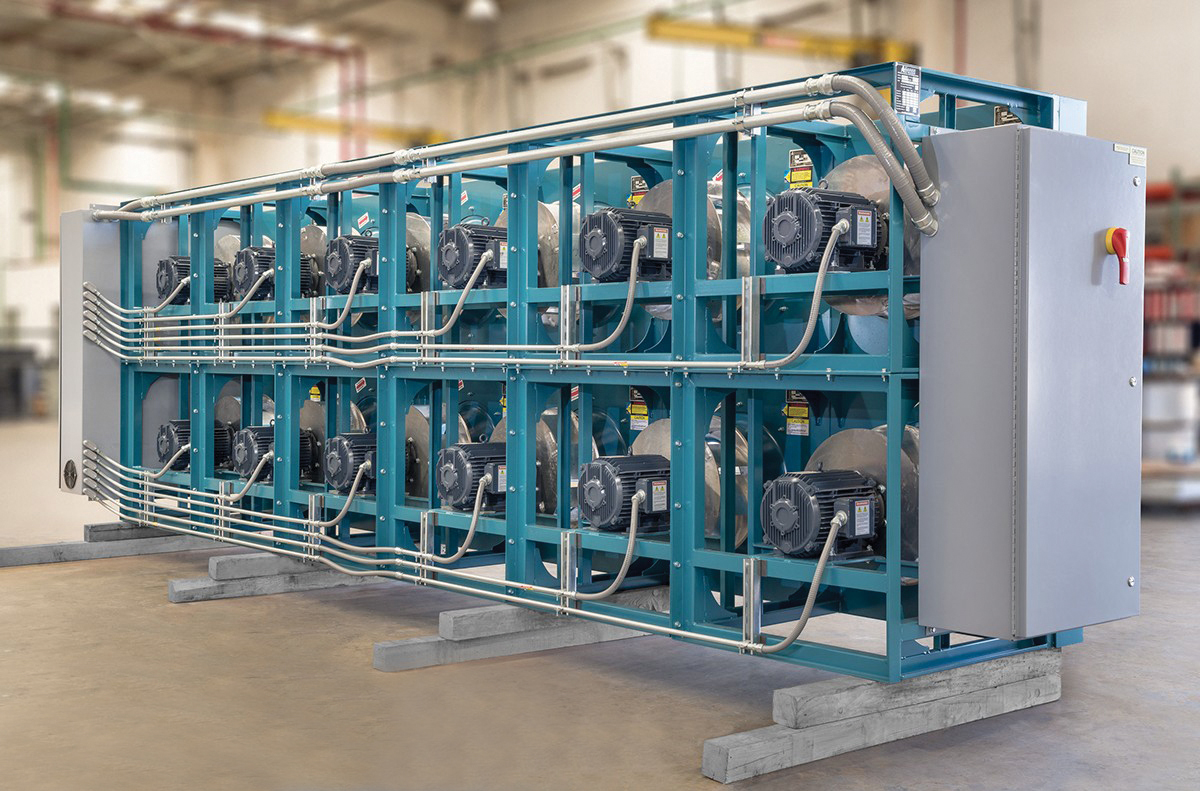
Andrew T. Holden, P.E. is a Sales Executive with NovaTorque, Inc. which is a California based company that produces ferrite based permanent magnet motors. Andy is an industrial engineer from Georgia Tech with a MBA from Georgia State and has spent almost 10 years in the HVAC industry as a manufacturer’s representative. He is currently focused on representing NovaTorque’s motors to engineers, architects, owners, OEMs, contractors, reps, and end users.
In addition to his time spent in the HVAC industry, he has spent more than five years in the electric-power generation sector as a consultant and as a commercial manager with international responsibilities.
Lisa Eitel has worked in the automation industry since 2001. Her areas of focus include motors, drives, motion control, power transmission, linear motion, and sensing and feedback technologies. She has a B.S. in Mechanical Engineering and is an inductee of Tau Beta Pi engineering honor society; a member of the Society of Women Engineers; and a judge for the FIRST Robotics Buckeye Regionals. Besides her motioncontroltips.com contributions, she also leads the production of the quarterly motion issues of Design World.